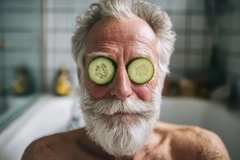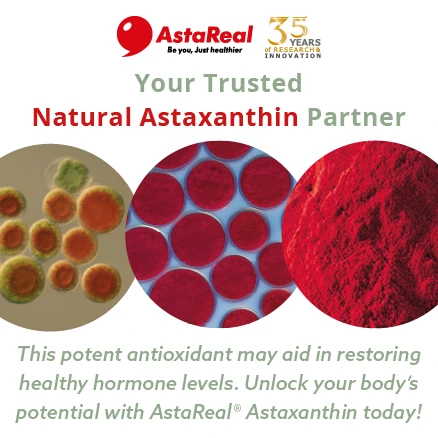Personal care labels green up formulas through smart pivots in sourcing and production
02 Dec 2022 --- Big players across the beauty field are piloting new environmentally friendly versions of core ingredients. Notable examples of this include L’Oréal’s latest investment in sustainable microalgae ingredients and Symrise’s new green emulsifying ingredient.
Skincare, fragrance and cosmetic brands this year are reassessing their sourcing and formulation strategies in light of mounting pressures from regulators and consumers to counter the climate crisis.
In particular, players operating in the EU fragrance industry have already flagged a “critical juncture” as the European (EU) Green Deal’s Chemical Strategy for Sustainability (CSS) requires substituting chemicals and reformulating products.
 L’Oréal and Microphyt are building a technological platform to create raw materials from microalgae biomass.
L’Oréal and Microphyt are building a technological platform to create raw materials from microalgae biomass.
This may pose an annual €2 billion (US$2.1 billion) industry loss, the International Fragrance Association recently warned.
European companies will soon be required to publish more detailed information on sustainability matters. Earlier this week, the European Council gave its final approval to the corporate sustainability reporting directive (CSRD), which will impact companies beyond the personal care sector.
“Data about the environmental and societal footprint would be publicly available to anyone interested in this footprint. At the same time, the new extended requirements are tailored to various company sizes and provides them with sufficient transition period to get ready for the new requirements,” states Jozef Síkela, Czech Minister of Industry and Trade.
L’Oréal’s microalgae investment
L’Oréal and the French biotech, Microphyt, have entered a strategic partnership in which L’Oréal’s venture capital fund, Business Opportunities for L’Oréal Development (BOLD), has acquired a minority stake in Microphyt.
Microphyt, founded in 2007 and based in the city Baillargues (in the Hérault region), has developed a “revolutionary” process with a low carbon impact to produce microalgae – microscopic plant organisms used in cosmetics – among other fields, for their active properties and functional qualities.
Thanks to this patented process and its control of natural stimuli (such as light, salt, nutrients, temperature variation, etc.) Microphyt is touted as producing – on a large scale and in a controlled manner – one of the widest varieties of microalgae in the world.
L’Oréal and Microphyt will build a technological platform to create raw materials from microalgae biomass. The ambition of both companies is to establish a long-term partnership for the development of new cosmetic solutions.
“The technological platform in an ‘extended lab’ mode is perfectly complementary to our own activities. With L’Oréal, this new technological platform will help us speed up the development of eco-designed ingredients, as well as facilitate the scale-up of our production,” remarks Vincent Usache, managing director of Microphyt.
Bio-sourcing objectives
This tie-up comes after several strategic scientific partnerships recently forged by L’Oréal to strengthen its “Green Sciences” ecosystem of beauty, including the precision-health heavyweight VERILY, the National Institute for Materials Sciences (NIMS) in Japan, the Singapore Centre for Environmental Life Sciences Engineering (SCELSE) and the Laboratoire de Chimie des Polymères Organiques (LCPO) in Bordeaux, France.
Alongside its focus on innovations in Greens Science, L’Oréal is operating a 2030 sustainable development program, which includes the objective that 95% of its ingredients will be bio-sourced, derived from abundant minerals or from circular processes.
Since the accomplishment in 2019 of one of the largest fundraisings in its sector, with Bpifrance through its SPI fund and by Sofinnova Partners, Microphyt strongly accelerated the development and the marketing of natural ingredients drawn from microalgae for nutrition and cosmetics.
 Symrise has introduced a green version of its SymDiol 68, a synergistic blend of 1,2-Hexanediol and 1,2-Octanediol.In the last 18 months, Microphyt has launched three active ingredients in cosmetics. One such ingredient is PhycoSi, an upcycled bioactives ingredient containing bioavailable marine silicium. The company has developed a process for extracting the silicium contained in a manufacturing co-product, thus upcycling a diatom extract intended for disposal.
Symrise has introduced a green version of its SymDiol 68, a synergistic blend of 1,2-Hexanediol and 1,2-Octanediol.In the last 18 months, Microphyt has launched three active ingredients in cosmetics. One such ingredient is PhycoSi, an upcycled bioactives ingredient containing bioavailable marine silicium. The company has developed a process for extracting the silicium contained in a manufacturing co-product, thus upcycling a diatom extract intended for disposal.
Cleaner emulsions
Among other innovations, Symrise has introduced a green version of its SymDiol 68, a synergistic blend of 1,2-Hexanediol and 1,2-Octanediol. Originally developed in 2003, the product moisturizes the skin and stabilizes emulsions due to its smaller droplet sizes, while improving product protection.
Working with all formulation types, the modern version of the mixture is now made of “100% green raw materials,” details the company.
Branded SymDiol 68 green, the ingredient consists of two “100% green” 1,2-alkanediols, caprylyl glycol and 1,2-hexanediol.
The microbiome-friendly mixture is water soluble and cold processable, and it features clear, colorless and nearly odorless characteristics. It is suitable for normal to sensitive skin types.
“With SymDiol 68 green, we are expanding our position in the growing market for green products,” says Dr. Nikolas Bugdahn, director of new molecules synthesis at Symrise’s Cosmetic Ingredients division.
“We are strengthening our position as the leading provider of modern product protection ingredients for our customers and always staying one step ahead.”
Symrise also offers green versions of pentylene glycol, caprylyl glycol, 1,2-hexanediol and 1,2-heptanediol.”
Last April, Symrise introduced its Hydrolite 8 green, its first 100% bio-based grade of caprylyl glycol. Aside from its moisturizing and product preservation properties, its properties as a wetting agent improve the pigment dispersion for a more even product color.
By Benjamin Ferrer














